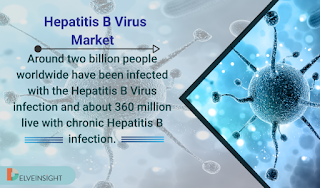Gene Therapy in Oncology
Ever thought of any disease that by any chance can be
reverted or any person who has inherited a debilitating illness can be normal
again? Indeed, it can, with the technology known as Gene Therapy. Not too long ago,
the idea of modifying a gene to cure or treat a disease was considered science
fiction. But, at present, the concept is a reality, and along with other
cutting-edge approaches, is redesigning how doctors treat and cure disease.
Gene editing is a technique used to modify genome sequences
through nucleases (an enzyme that is essential to gene editing). In gene
editing, DNA is inserted, replaced, removed or modified at particular locations
in the human genome in order to treat a specific disease. The most common
approach to gene editing involves the use of “molecular scissors,” often a
programmable nuclease, to make precise cuts in the patient’s DNA at a specific
location in the genome. The cuts are then repaired to create the desired edit
and result in a corrected gene. Examples of gene therapy approaches include
replacing a mutated gene that causes disease with a functional copy; or
introducing a new, correct copy of a gene into the body. Therapeutic genes are
packaged in a delivery vehicle, often deactivated viruses such as
adeno-associated viruses, retroviruses or lentiviruses. Gene therapy may be
performed in vivo, in which the therapeutic gene is directly delivered to cells
inside the patient’s body, or ex vivo, in which the therapeutic gene is inserted
into cells outside the body before being introduced into the body. Ex vivo gene
therapy is a form of cell therapy. This approach includes several cell-based
immunotherapies, such as chimeric antigen receptors (CAR) T-cell therapies,
T-cell receptor (TCR) therapies, natural killer (NK) cell therapies, tumor
infiltrating lymphocytes (TILs), marrow-derived lymphocytes (MILs), gamma-delta
T-cells and dendritic vaccines.
There are many companies that prepare gene therapy market
reports, and one of the leading companies is DelveInsight. It proffers the
report that covers a forecast and an analysis of the gene therapy market forecast
on a global and regional level. The gene therapy in oncology report also
includes Comprehensive Insights on Cancer Gene Therapy by Market Trends,
Competitive Landscape, Clinical Trials, Regulatory Considerations, Potential
Geographies Licensing Opportunities, Top Cancer Indications, Vectors (Viral,
Non-Viral, Engineered nucleases) and Advancements in Technology. It provides
information across the entire gene therapy value chain covering gene therapy
profiles core insights, pre-clinical data, clinical data, technology details,
and funding and licensing opportunities. Using the propriety DelveInsight
Competitive Matrix models, the report also provides the first in class market
analytics providing predictive analysis of early market winners of the clinical
therapies in a demographic presentation view. It has covered approximately 50
gene therapies covering 34 Pharmaceutical companies. The companies are
utilizing 26 different technology platforms which have inherent uniqueness and
robustness. The Report also gives insights about the vectors usage in Gene
therapy which are approximately 82% for viral vectors, 11% for the Non-Viral
vectors and 7% for the Bacterial vectors.
The cell and gene therapy market report provides an edge
while formulating business strategies by enabling comprehensive understanding
of the historical trends, present challenges and future developmental
opportunities for Cancer Gene Therapy; which will help in prudently positioning
in the market against competitors.
The global gene therapy market is projected to witness
remarkable growth in the coming years owing to rising cases of hereditary
diseases across the globe. The global gene therapy market is likely to be
driven by the growing prevalence of life-threatening genetic disorders, such as
sickle-cell anemia, cystic fibrosis, down syndrome, across the globe in the
future. Other major factors that are anticipated to drive the gene therapy
market are the need for gene therapy based personalized solutions and
increasing adoption of gene therapy for treatment. However, the requirement of
an individual case-by-case approach and high treatment cost might hamper the
gene therapy market on a global scale in the estimated timeframe. Other major
factors that are anticipated to drive the gene therapy market are the need for
gene therapy based personalized solutions and increasing adoption of gene
therapy for treatment.
Around 70% of the global clinical trials are going in the
United States that makes it the most profitable market for gene therapy in
oncology. This is lucrative due to the drivers like – Highly Effective
Gene Therapies in terms of efficacy increased level of industry-sponsored
research, favourable regulatory and policy environment, an increasing number of
gene therapy approvals. It is a big opportunity for an investment with
Non-Partnered Products in Clinical and Non-Clinical Phases. Overall in gene
therapy in oncology, about 23% of the products are partnered, and around 77% of
products are non-partnered. The non-partnered products proffer pronounced
investment opportunities for companies that are looking up for a partnership in
gene therapy in Oncology.


Comments
Post a Comment